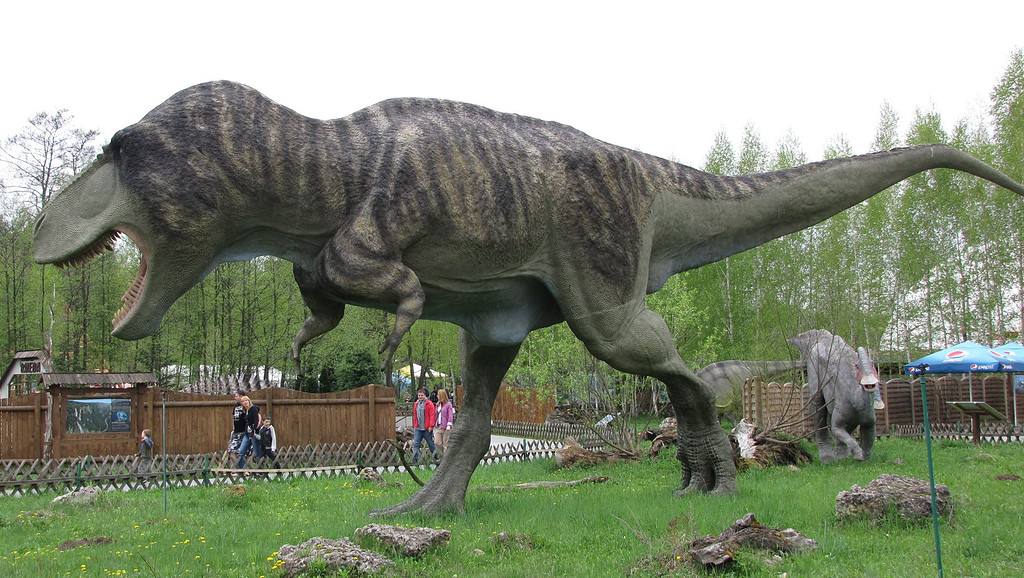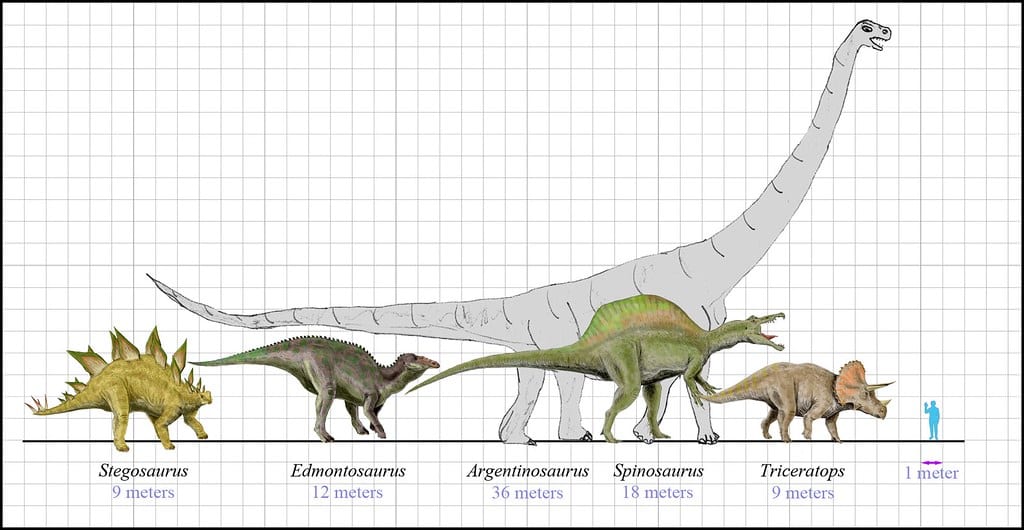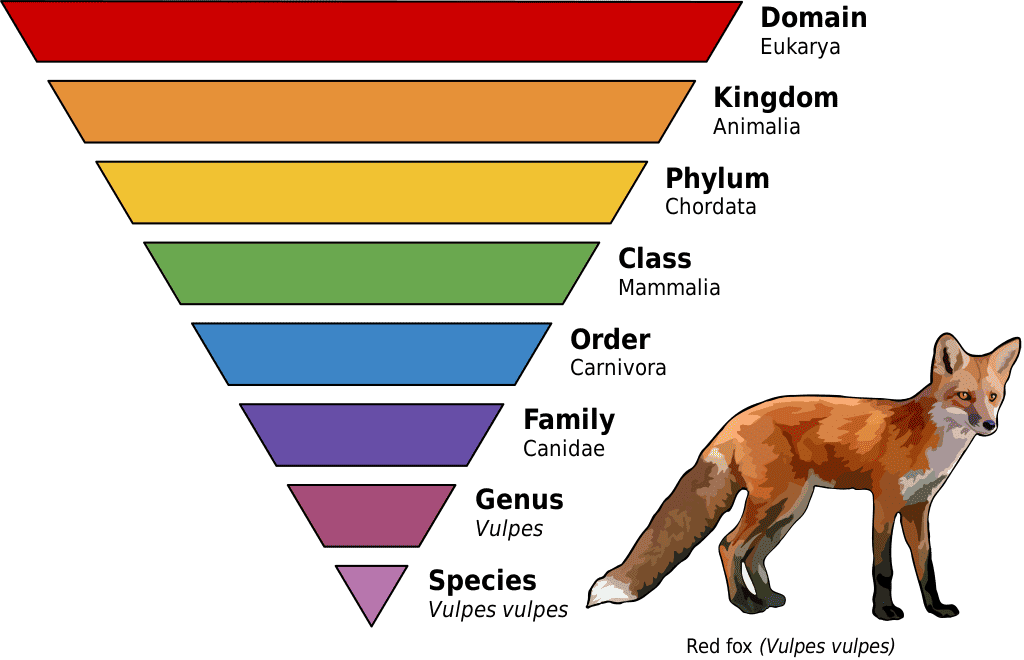
Dinosaurs are a diverse group of reptiles that once roamed our planet. They emerged over 240 million years ago and have captured human imagination like few other beings in our natural history. There’s the mighty triceratops, the spike-tailed stegosaurus, and of course, the “king” of the dinosaurs, the Tyrannosaurus Rex. But how are all these dinosaurs named?
Well, there are some very specific rules for naming dinosaurs — but also a bit of creative freedom.
Dinosaurs are usually named after a characteristic body feature, the place where the fossil was discovered, or a person involved in the discovery. However, dinosaurs are named just like modern creatures. This includes a combination of two Greek or Latin words. But let’s take it one step at a time.
How the name ‘dinosaurs’ emerged
The term ‘Dinosauria’ might seem as ancient as the creatures it represents, but it has a history and an origin that goes back to the early days of paleontology, some 200 years ago.

In the early 19th century, fossils of gigantic creatures were being unearthed across the globe. Naturalists of the time realized that this is a different group of ancient animals. What were these creatures? How did they fit into the natural order?
Sir Richard Owen is the one who came up with a key answer. Owen was an outstanding naturalist with a remarkable gift for interpreting fossils. Owen was working with very limited fossils and very limited understanding — after all, the theory of evolution by natural selection was just catching on. Nevertheless, he became one of the pioneers of paleontology and coined the term ‘dinosaur.’
Owen introduced the term ‘Dinosauria,’ derived from the Greek words ‘deinos,’ meaning terrible, and ‘sauros,’ meaning lizard. This term encapsulated the awe and grandeur of these ancient beasts, painting them as ‘terrible lizards.’
Although Owen would go on to leave a long legacy of discoveries (and of controversies), this is his crowning achievement. This is how we got the name ‘dinosaurs’. But how are individual dinosaurs named?
The scientific name of animals
Every animal, current or extinct, has a scientific name that consists of two words. But it wasn’t always like this. In fact, this naming system was a huge innovation for biology.
This method is called binomial nomenclature, which is a fancy word for saying “We’re naming species with two words.” The system was developed by Carl Linnaeus, an 18th-century Swedish botanist. This system uses Latin or Latinized words to describe each species uniquely. The idea behind using Latin is that this was meant to be a universal system, not tied to one existing language or another — also, Latin was the “science” language at the time.

In this naming system, each species is identified by two Latinized names:
- Genus Name: This is the first part, and it’s always capitalized. It identifies the broader family or group to which the species belongs.
- Specific Epithet: This is the second part, a descriptive term that often tells something unique about the species.
Together, these two names form the full scientific name. For example, in the name Homo sapiens, ‘Homo’ is the genus that includes humans, and ‘sapiens’ means wise.
This may not seem like too big of a deal, but it’s a huge change in how biologists approach species.
Imagine trying to build a puzzle without knowing what each piece represents. That’s what studying the natural world would be like without a standardized naming system.
By providing a clear, universal language, binomial nomenclature allows scientists to classify, study, and conserve species. It’s a bridge connecting research with policy, education, and public awareness.
The process itself works something like this.
Naming a New Species: A Science and an Art
Discovering a new species is a thrilling adventure, but naming it? That’s an intricate dance of science and creativity.
- Step 1: The Discovery. The naming journey begins with discovery, whether it’s a plant hidden in the jungle or a microbe from the ocean depths, or a fossil millions of years old.
- Step 2: Research and Analysis. Detailed examination follows, where scientists compare the organism with known species. They study its appearance, genetics, habitat, behavior, and other traits to determine its uniqueness.
- Step 3: The Rules of Naming. There are rules to follow. The International Code of Nomenclature for algae, fungi, and plants (ICN) and the International Code of Zoological Nomenclature (ICZN) govern the naming conventions. These rules ensure that each species name is unique and universally accepted.
- Step 4: A Creative Spark. Naming a species can also be a poetic act. It might reflect the creature’s appearance, the place it was found, or even pay homage to a person. For instance, a spider named after singer David Bowie, Heteropoda davidbowie, combines scientific categorization with cultural tribute.
Naming dinosaurs
So that’s how all animals, including dinosaurs, are named. If scientists find a fossil, they first see if it belongs to any known creature. Then, if it’s a new one, they check to see what group it belongs to. What other dinosaurs does it resemble? If you can’t tell that much about it, you may not get a chance to name it. But if you describe it, and you know what genus it is, you already have half the name. You can use the other half to describe some unique feature or where it was found or something else.
Here are some words commonly used in naming dinosaurs:
| Word | Meaning |
|---|---|
| Saurus | Lizard |
| Rex | King |
| Cephalus | Head |
| Dromeus | Runner |
| Pod | Foot |
| Ornith | Bird |
| Therium | Beast |
| Raptor | Thief or Plunderer |
| Mega | Large or Great |
| Odon | Tooth |
| Tri | Three |
| Pter | Wing or Feather |
| Brachy | Short |
| Longus | Long |
| Micro | Small |
These elements can also be combined to describe the specific characteristics or features of a particular dinosaur. For example, the name “Tyrannosaurus rex” can be broken down into “Tyranno” meaning tyrant, “saurus” meaning lizard, and “rex” meaning king, so it collectively means “King of the Tyrant Lizards.” Similarly, “Brachiosaurus” combines “brachio” meaning arm and “saurus” meaning lizard, describing a dinosaur with longer front limbs, or “arm lizard.”
Naming a bajillion dinosaurs

The Mesozoic Era, often referred to as the “Age of Reptiles,” was a time of remarkable change and diversity. It’s divided into three periods: the Triassic, Jurassic, and Cretaceous. Each of these periods saw the rise and fall of different dinosaur species, set against a backdrop of shifting continents, fluctuating climates, and evolving ecosystems.
Dinosaur fossils have been discovered on every continent. Thanks to them, researchers have pieced together not only the appearance and behavior of these extraordinary creatures but also broader insights into Earth’s geological and biological history. But there are a lot of dinosaurs, and naming them means you have to use up a lot of words.
Thankfully, researchers have been creative enough to avoid confusion. But in the earlier days of dinosaur naming, during the so-called “Bone Wars,” competing paleontologists would often give the same dinosaur competing names, which brought a lot of confusion even among researchers. This is what the strict naming procedures aim to avoid.
Dinosaur name examples
- Tyrannosaurus Rex: As previously mentioned, this translates to “King of the Tyrant Lizards.” “Tyranno” means tyrant, “saurus” means lizard, and “rex” means king. This name reflects the dinosaur’s status as one of the largest and most fearsome predators of its time.
- Brachiosaurus: This name combines “brachio,” meaning arm, and “saurus,” meaning lizard. It describes a dinosaur with notably longer front limbs compared to its hind limbs. It can be translated as “arm lizard.”
- Stegosaurus: This name comes from “stego,” meaning roof or cover, and “saurus,” meaning lizard. It translates to “roof lizard” or “covered lizard.” This name was inspired by the large, flat bony plates along its back, which resemble a roof.
- Velociraptor: This name combines “veloci,” meaning swift, and “raptor,” meaning thief or plunderer. So, it translates to “swift thief” or “swift plunderer.” It aptly describes this small and agile predator, known for its speed and sharp claws.
- Triceratops: This name translates to “three-horned face,” from “tri,” meaning three, “ceras,” meaning horn, and “ops,” meaning face. As the name suggests, Triceratops is famous for its three facial horns: two above the eyes and one on the nose.
- Pterodactyl: While not a dinosaur but a type of flying reptile called a pterosaur that lived during the time of the dinosaurs, its name combines “ptero,” meaning wing or feather, and “dactyl,” meaning finger. It translates to “wing finger,” which describes the elongated finger that supported its wing.
- Microraptor: This name comes from “micro,” meaning small, and “raptor,” meaning thief or plunderer. It translates to “small thief” and refers to a small, bird-like dinosaur known for its feathered wings and agile movement.
- Iguanodon: This name combines “iguana,” a type of modern lizard, and “odon,” meaning tooth. It translates to “iguana tooth.” The name was chosen because the dinosaur’s teeth resembled those of an iguana.
- Ankylosaurus: This name is derived from “ankylo,” meaning fused or stiff, and “saurus,” meaning lizard. It translates to “fused lizard,” reflecting the dinosaur’s heavily armored body and fused bones in the skull and other regions.
Naming dinosaurs
In conclusion, the naming of dinosaurs is a complex and fascinating process that involves a blend of scientific method, historical understanding, and creative imagination. From the term “dinosaur” itself to the specific monikers bestowed upon each species, these names help to paint a vivid picture of creatures that once walked the Earth. They allow us to classify, understand, and connect with the ancient world in a unique way.
These names not only describe physical features, behavior, or the location of discovery but also provide an imaginative link to these incredible creatures of the past. They serve as an engaging entry point into the study of paleontology and the natural history of our planet.
The blend of Latin and Greek terms may be daunting, but it’s the established categorization of all animals. In a way, each name is a tiny window into our prehistoric past, a narrative that we continue to explore and build upon.


